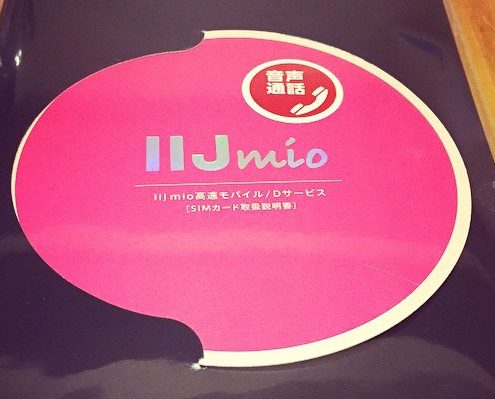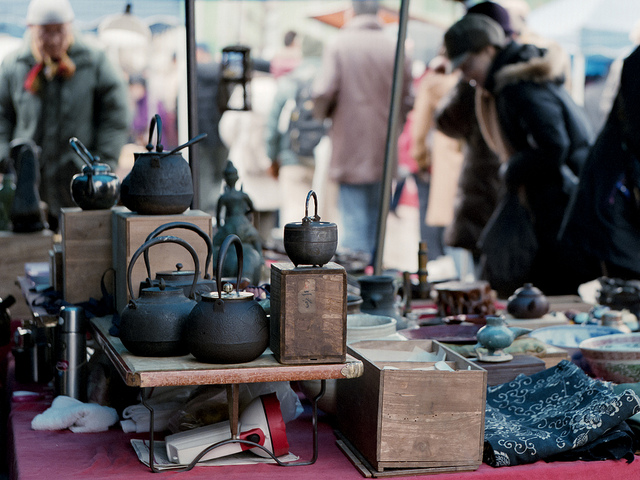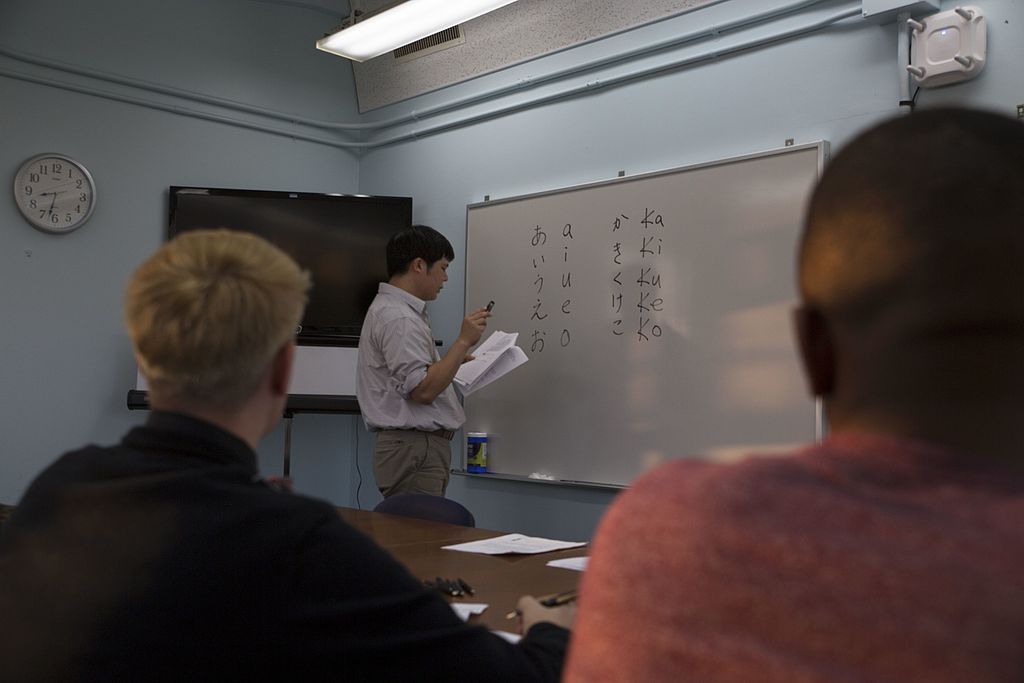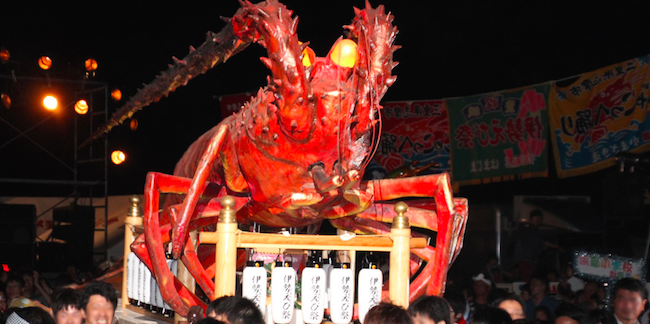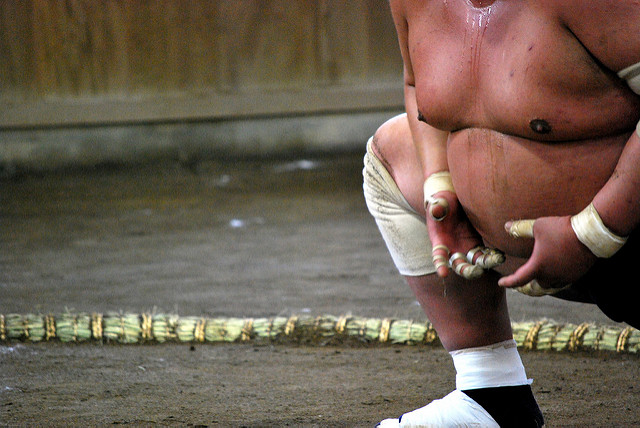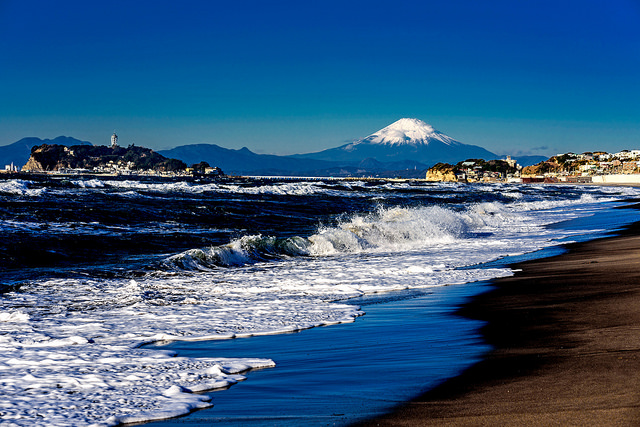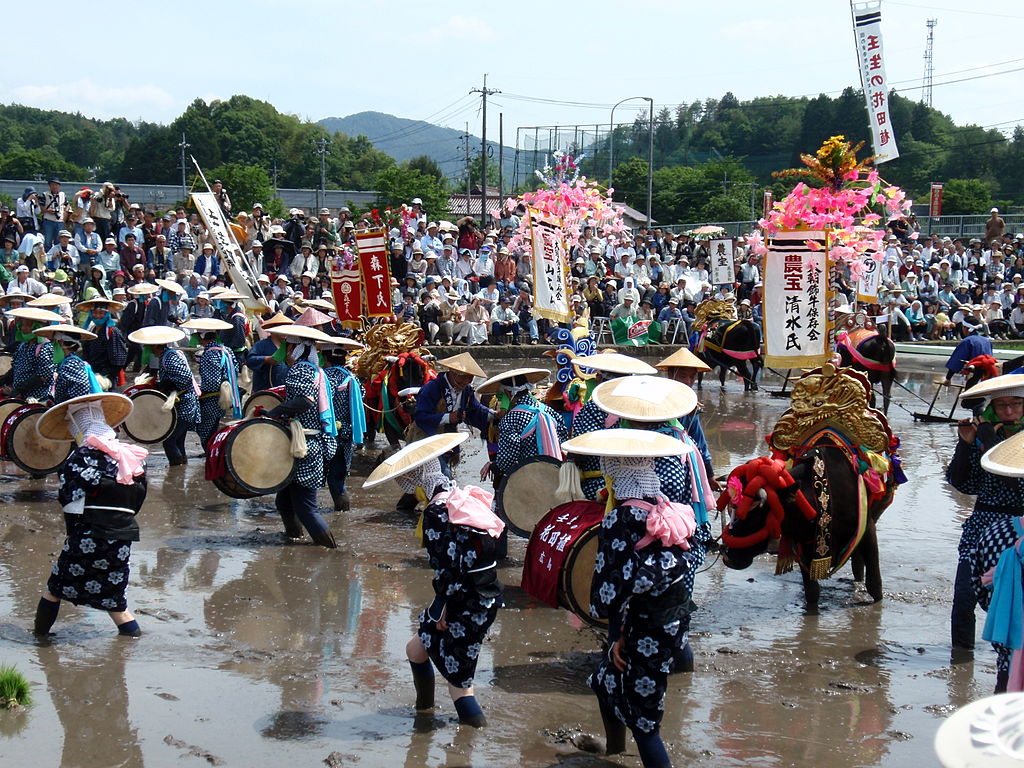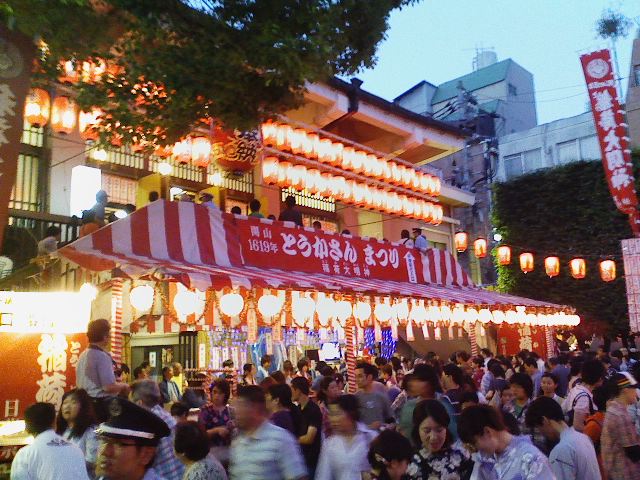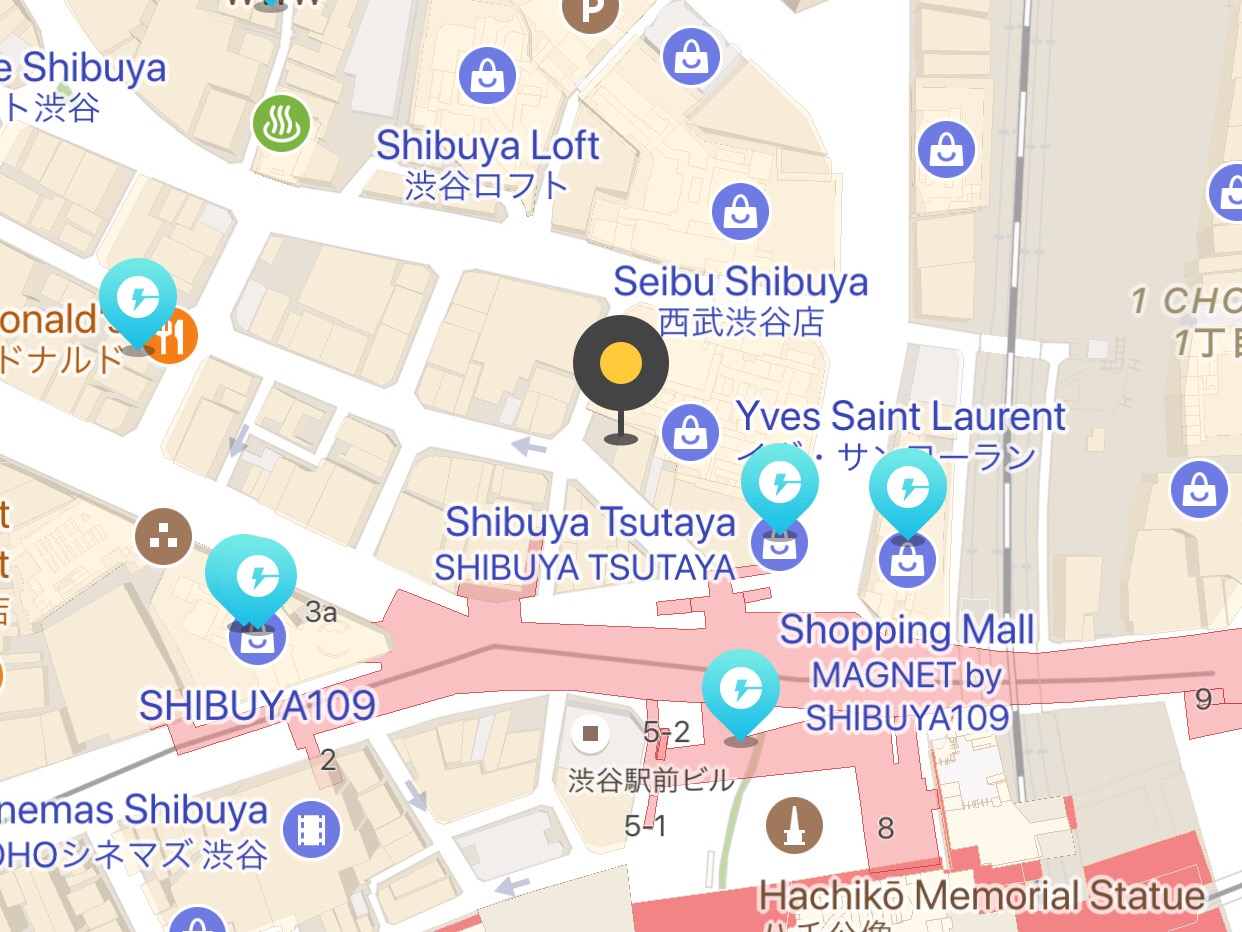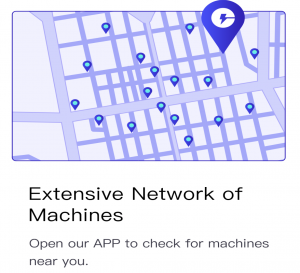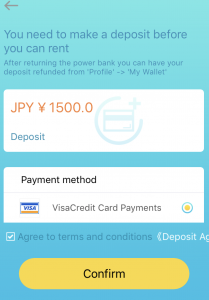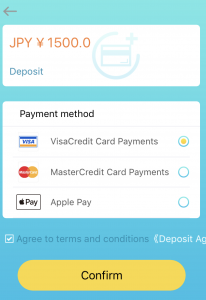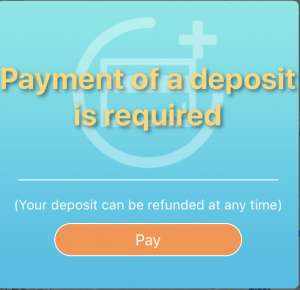May 30, 2018
Bic Sim (IIJmio) SIM Cards: Important Changes in Policy

Beginning on March 2018, IIJMIO, one of the largest MNVO SIM operators in Japan, started screening credit cards linked to IIJMIO accounts once a month to ensure that payment methods are up to date and to reduce cases of expired cards being registered.
Japanese Announcement: www.iijmio.jp/info/iij/1523009739-15639.html
One unfortunate result of this new policy is that some foreign-issued cards are being flagged and are becoming unusable even though they were initially approved at contract start.
If your overseas credit card is not accepted, you will receive a notice by email and a bill by post. The bill sent by post is payable at your local convenience store so please be sure to make this payment as soon as possible.
If you have a Japanese credit card, a simple solution is to update your payment method to that card. As the IIJMIO website is in Japanese, please use this guide that H&R Consultants has created to help ease you through the process.
Changing Credit Card Bic_sim_iijmio_Important_Changes (PDF)
Please note that if you do not update your payment method to an accepted credit card or pay at a conveneince store, your service will be suspended at the end of your current cycle and the contract cancelled at the end of the next cycle.
If you do not have a Japanese credit card and your foreign credit card does not work and you wish to change your phone company please find other popular options below that may work for you. In addition to these options, there are also Softbank, Docomo, and AU, although generally monthly fees and cancellation costs are generally much higher than SIM-only plans.
- OCN mobile one https://www.ntt.com/personal/services/mobile/one.html
- UQ mobile http://www.uqwimax.jp/plan/?brand=mobile
Image: flickr.com “IIJmio みおふぉん 届いてました” by naka hide (CC BY-NC-SA 2.0) – Modified
May 29, 2018
Flea and antique markets in Tokyo

One of the joys of living in a different country is absorbing its culture and aesthetics. One of the best way of doing that is by filling your home with fashionable goods and furnishings that reflects both your personal taste and that of your adopted country.
Now, to do this in Tokyo you can of course head to any one of the countless department and interior design stores. However a more interesting, culturally representative, and let’s face it, more fun thing to do is to have a browse around flea markets and antique stores.
Tokyo is awash with these havens of good (and, of course, bad) taste, and within them you can find all manner of interesting pieces with which to liven up your home. There are plenty of bargains to be found, so get hunting!
Akasaka Antique Market in Ark Hills
The Akasaka Antique Market in Ark Hills is perhaps the most upscale of its kind in the city. You can find private antique dealers next to trendy clothing brands, and everything from furniture to jewelry.
- Where: 1-12-32 Akasaka, Minato-ku
- When: Last sunday of the month
- Contact: www.arkhills.com
Heiwajima Antique Fair
Not the most regular of markets, the Heiwajima Antique fair is on just five times a year, but claims to be the oldest of its kind in Japan. When it does roll into town, there are 280 dealers from all over the country. Expect nick-nacks, pottery and all kinds of unusual pieces.
- Where: Ryutsu Center Building, 2F
- When: Three days, five times a year. The next one is 16, 17 and 18 September, 2016
- Contact: www.kottouichi.com
Oi Racecourse Flea Market
With around 300 vendors, the flea market at Oi Racecourse is is one of the biggest in the city. It is also one of the most regular. You can find a wide range of products from full-time vendors, ranging from the mundane to the collector’s items.
- Where: Tokyo City Keiba, 2-1-2 Katsushima, Shinagawa-ku
- When: Every Saturday and Sunday
- Contact: https://mfmf.trx.jp/
Best Flea Market
Held by the Tokyo International Forum on the first Sunday of each month, there are over 200 stalls at the Best Flea Market (their name, not mine). Most are manned by creatives who are selling their one off pieces. Great for something really original that you definitely wouldn’t find in IKEA.
- Where: Tokyo International Forum, 3-5-1 Marunouchi, Chiyoda-ku
- When: One Sunday each month. See website for details.
- Contact: www.t-i-forum.co.jp/event/antique
Yasukuni Shrine Market
Though Yasukuni Shrine is a little bit of controversial shrine (it commemorates the Japanese war dead, including war criminals) the market it one of the best known in the city. If you’re looking for antiques and pottery, this is the place to go.
- Where: Yasukuni Shrine, 3 Chome-1-1 Kudankita, Chiyoda
- When: Two Saturdays a month. See website for details.
- Contact: www.kankyo.o.oo7.jp
Flea market language
Haggling isn’t as readily acceptable in Japan as some other Asian countries. With that said, in the world of the flea market so the rules are slightly different. Below are a few language tips you can use in the flea market to hopefully make your bargain hunting that little bit cheaper. Just remember, this isn’t a Marrakesh Souk or a New Delhi market, so if you are going to try to barter, do so with a smile on your face, and if the store owner isn’t into it, accept gracefully.
- Ikura desu ka? – How much is this?
- XXXX en, dou desu ka? – Would you accept XXX yen?
- Anatano saikōno kakaku to iu koto desu ka? – Is that your best price?
- Yasuku naranai? – Can you make it any cheaper?
- Takai desu ne? – It’s a bit expensive, isn’t it?
- Ni/san/yon/go-ko kattara, waribiki arimasu ka? – If I buy two/three/four/five, is there a discount?
Mark Guthrie
Photo: flickr.com “20131221 Antique and Flea Market in Toji-Temple [ Kyoto, JP ] | 京都・東寺 弘法市(骨董市) To-ji Temple Kobo ichi Market [ Kyoto,JP ]” by peter-rabbit (CC BY-SA 2.0) -Modified
May 29, 2018
Get Your Grill On – Nagoya’s BBQ Spots
The Japanese have something of a love/hate relationship with the summer months. As soon as the mercury climbs above 25 degrees, women break out the parasols, curtains are pulled tight to keep out sunlight, and everyone’s vocabulary is limited to a single word: atsui (hot!). But that is not to say that the summer is entirely shunned. For it is now that, in spite of the rising humidity and the occasional rainstorm, the Japanese like to get out and commune outdoors. One excellent way of doing this is barbecues with friends and families. Below are a few choice spots for doing just that in and around Nagoya.
Shonai Ryokuchi Park
 To the north of the city, Shonai Ryokuchi Koen is one of Nagoya’s biggest and best equipped parks, with two main barbecuing areas around the boat pond. For use of the pits and equipment in barbecue Zone A (see above) a reservation is required, and can be made by calling 0570-09-0014 between 9:30 and 17:00, or on their website here. The BBQ area in Zone B is on a first come, first served basis and reservations cannot be made.
To the north of the city, Shonai Ryokuchi Koen is one of Nagoya’s biggest and best equipped parks, with two main barbecuing areas around the boat pond. For use of the pits and equipment in barbecue Zone A (see above) a reservation is required, and can be made by calling 0570-09-0014 between 9:30 and 17:00, or on their website here. The BBQ area in Zone B is on a first come, first served basis and reservations cannot be made.
In both areas you can bring your own equipment, but if you happen not to have what you need, you can rent the whole set, including cooking utensils and even tables and chairs at a fee of 1,000 JPY per person for adults or 500 JPY for children of elementary school age.
- Where: Nishi-ku, Yamada cho Ohashi Nakajidai (map)
- Website: http://digiq.jp/shonai (Japanese) http://shonai-ryokuchi.jp/bbqarea/en/ (English)
Odaka Ryokuchi Greens Park
Quite apt for being in Midori (green) Ward, Odaka Ryokuchi Koen – often called Odaka Greens – is 120 hectares of beautiful park and was designated as one of the 100 best urban parks in Japan. One of its great facilities includes ‘day camp’ areas in which from March to September between 10:00 and 17:00, or October and February from 10:00 to 16:00, you can set up a barbecue site.
There are three sites available. The sand sites that come without a BBQ are free to use without reservation. Then there are the twelve open air BBQ sites that come with an oven, and eight covered spots also with ovens. For these latter two reservations are required and there is a fee of 500 and 750 JPY respectively.
- Where: Takayama-1-1 Odakacho, Midori Ward (map)
- Website: www.aichi-koen.com/odaka
Tempaku Park
The area around which you find Tempaku Koen is best known for the Yamazaki River, perhaps  Nagoya’s most beautiful cherry blossom sites in spring. But in Summer, the nearby park is a lovely place to hang out and enjoy a barbecue.
Nagoya’s most beautiful cherry blossom sites in spring. But in Summer, the nearby park is a lovely place to hang out and enjoy a barbecue.
There are 20 ovens within the park, and like at Shonai Ryokuchi these are split between two zones. In Zone A you can find 12 ovens that are free to use, and are taken on a first come, first served basis. If you don’t want to take the chance of the pits being all occupied, there are eight areas in Zone B that can be reserved at a cost of 800 JPY for a half day or 1600 JPY for the full day. To do so, call the park on 052-803-6644.
- Where: Tenpaku Ward, Tenpakucho Oaza Shimada, Kuroishi Hoka (map)
- Website: http://www.city.nagoya.jp/ryokuseidoboku/page/0000005081.html
Outdoor Base Inuyama Campground
50 minutes from Nagoya, nestled amongst mountains and waterfalls is the Inuyama Campground, an excellent BBQ spot for all of the family, and one that you need to bring absolutely nothing (but your wallet) should you so require.
From teepees to utensils, from barbecues to even the food, everything can be either bought or rented at Inuyama Campground. On top of that there are loads of events that are specifically catered for kids, such as tree climbing and open air pizza baking. And for adults wanting to wash the smell of meat out of their hair there is even a wood-fired ‘onsen’ bath!
- Where: 95, Higashiyama, Imai, Inuyama-shi (map)
- Website: www.kirakira.net (Japanese) https://inuyama.gr.jp.e.jm.hp.transer.com/outdoor.html (English)
Shinmaiko Blue Sun Beach

Just a 10 minute stroll from Shinmaiko Station on the Meitetsu Line, Shinmaiko Blue Sun Beach is the nearest half-decent stretch of sand to Nagoya, making it a great place to barbecue and test out that old wives tale about swimming after eating.
With a four person table coming in at 5,000 JPY (this includes a 3kg bag of charcoal) between 9:00 and 15:00, the barbecue rental is a bit on the pricey side, particularly when you must bring all of your own utensils and food. However, what it lacks on cow cost it more than makes up for in convenience as there are toilets, showers and a store selling draft beer a mere stone’s throw away. Oh, and of course there is the beach too. These tables tend to go pretty quickly, so an advance reservation is definitely recommended.
- Where: Midorihamamachi, Chita, Aichi Prefecture (map)
- Website: www.marine-park.jp
By Mark Guthrie
Photo: by Chris Campbell (CC BY-SA 2.0) via flickr.com
Photo: by http://kikuko-nagoya.com/html/tempaku-koen.html
Photo: by http://shonai-ryokuchi.jp/bbqarea/en/
Photo: by Mark Guthrie (Own Work)
May 29, 2018
Japanese Classes in Kobe

If you’ve recently moved to Japan, you might be thinking about learning the language to help you communicate with the locals and understand the culture. Of course, there are plenty of online courses and ‘learn Japanese’ book/CD packages but there’s nothing like a bit of face-to-face learning in a local setting. Kobe has around 44,000 foreign residents so the city is home to many who either don’t speak Japanese or speak it as a second language. Those who want to learn or brush up on their skills can find classes ranging from beginner to advanced level.
Free sessions
You can find volunteer-led classes that are run for free if you want to sample a few sessions without committing to anything. These are mostly less formal sessions but a good chance to meet some of the local people as well as expats. You may be asked to make a donation towards class materials.
Kobe International Community Center
Kobe International Community Center (KICC) runs a free service matching volunteer Japanese speakers with foreign residents wanting to learn the language. 50 people are paired each month with volunteers for 6 months of free lessons. Skill levels vary as the volunteers are not trained teachers. A fee is charged for study materials.
Website: http://www.kicc.jp
Tel: 078-291-8441
International Education and Resource Network
International Education and Resource Network (iEARN) runs free sessions for foreign residents every Sunday (10:30 a.m. to 12:00 p.m.) at the Kobe Center for Overseas Migration and Cultural Interaction. Lessons are taught by university students and are available at beginner and intermediate level. An additional session has just started for children, three Sundays a month. Course materials need to be paid for.
Website: http://www.jearn.jp/eng/index.html
Tel: 078-862-8288
Low cost sessions
Hyogo International Association
For affordable classes, the Hyogo International Association is a good option. They hold beginner level sessions two evenings per week for a total of 16 sessions running twice per year (May/June and October/November) for 2,000 yen per term. There is also an intensive summer course option running in July/August for 4,000 yen.
Website: https://www.hyogo-ip.or.jp/
Tel: 078-230-3261
Nihonga Hiroba Okamoto
Nihonga Hiroba Okamoto offers beginner-level sessions taught by volunteers on Wednesdays and Saturdays. Lessons only cost 1,000 yen per month but you will need to pay a membership fee of 2,000 yen (which lasts one year) and fund course materials.
Website: http://www.kabto-yama.ac.jp/hiroba/english.htm
Tel: 078-453-5931
Sessions for children and young people
Kobe Kodomo Nikoniko Kai
Kobe Kodomo Nikoniko Kai runs sessions teaching children Japanese every Thursday and Saturday (4:00 p.m. to 6:00 p.m.) at the Honjyo Chiiki Fukushi Center in the Higashi Nada ward. The cost is 1,600 yen per month plus an insurance fee.
Website: http://nikoniko.qee.jp/
Tel: 078-453-7440
Kobe Student Youth Center
Kobe Student Youth Center offers classes run by volunteers through a scholarship fund. A 200 yen fee is charged per class in addition to course materials that need to be paid for. Classes are available in slots of up to 2 hours any day between Monday and Saturday.
Website: http://ksyc.jp/japanese-lesson-nihongo-salon/
Tel: 078-851-2760
Full price sessions
Lexis Japan
Lexis Japan is rated as one of the best language schools in Japan and attracts students from all across the globe. Located next to Motomachi Station, the school offers everything from beginner to advanced level Japanese courses, including intensive courses, evening courses and summer programs. Prices vary – a 9-week evening course at beginner level is around 29,700 yen.
Website: http://www.lexisjapan.com/
Tel: 078-331-0944
Communica Institute
Communica Institute in Sannomiya has been teaching Japanese for over 25 years, specialising in intercultural communication. The school runs long and short-term courses as well as private lessons, offering courses in both general and business Japanese. Courses are around 175,000 yen for 3 months and 360,000 yen for 6 months plus registration fees.
Website: http://communica-institute.org/
Tel: 078-333-7720
By Cpl. Janessa Pon [Public domain], via Wikimedia Commons
May 29, 2018
Ise Ebi Matsuri (Lobster Festival)
For much of the world, there is little more decadent than dining out on lobster. However, here in Japan, lobster – while still relatively pricey compared to most seafood – is by no means the preserve of the uber-rich, and nor is the festival that celebrates it each year.
All along the Pacific coast of Japan lives a spiny form of lobster that has for centuries been fished in the Shima Peninsula, off the coastline of Mie Prefecture. Named after Ise Bay where historically they were caught at greater levels than anywhere else in the country, Ise ebi (literally, though somewhat misleadingly, ‘prawns from Ise’) are famed for their bright red shells and juicy white flesh, and are so important to Mie’s east coast that there is an annual festival to celebrate their very existence.
Ise Ebi Matsuri
Ise ebi is considered to be the most fortuitous of foods, hence its connection with the New Year festivities, but down the centuries for the people in Hamajima-cho in the Shima National park, Ise ebi has been the lifeblood of their community. Here the skills of lobster fishing have been passed down from generation to generation, and each year on the first Saturday of June, in order to commemorate the end of the fishing season they get together to salute this most delicious of decapods, this most lip-smacking of langoustines, this most rocking of rock lobsters.
The festival, which has been held since 1954, starts at 13:00 with a blessing ceremony to pray for a profitable fishing season in the coming year and the safety of the town. With this solemn formality undertaken, the festival can truly begin as children fill the streets in garish costumes to take part in a dancing competition, a taster of what is to come.
Dancing is a central theme to the Ise Ebi Festival, and from between 15:00 and 17:00, 30 troupes of adult dancers – also dressed in fantastic outfits – will compete to show off their their ‘jakoppe’ skills, a dance local to the area that is an integral element to the festival (and if you too want to get involved, you can find instructions of how to dance the jakoppe here).
From 18:00 choju-jiru, or ‘long life soup’ is served, a luxurious miso soup made with the delicious Ise ebi, after which, from 19:00 to 20:45, comes the main event: the parade.
Dancing along the beautiful setting of the Coastal Road, the troupes return, getting their jakoppe on, accompanied by local musicians. People line the street to cheer them on until the finale, when the giant 6.5m, 450kg lobster ‘mikoshi’ portable shrine is carried aloft by presumably exhausted revelers. Not a sight you are likely to see elsewhere on this planet…
Then, because a summer festival in Japan wouldn’t be the same without it, from 8:45 there is the traditional fireworks display set to music, that is perhaps just as spectacular (if not quite as bizarre) as all that has gone before.
Ise Ebi Matsuri Details
- When: First Saturday of June, annually (June 2, 2018)
- Where: Mie Prefecture, Shima City, Hamajima-cho, Hamajima 2723 (map)
- Access: Kintetsu Train: 20 minutes by bus from Kintetsu Ugata Station; Shukuura line bus: five minutes on foot from Hamajima bus stop
- Tel: 0599-53-3330
- Website: www.iseebi-onsen.com
If you are in the area, there are loads of things to do around Ise and Shima. Check out our post here all about it.
By Mark Guthrie
May 29, 2018
Getting Up Close and Personal at Nagoya’s Sumo Stables
The sumo season centers around six fifteen-day major competitions, or ‘honbasho’, throughout the year, with three events held in Tokyo in January, May and September, one in March in Osaka, one in Fukuoka in November, and July sees the Nagoya Basho.
The honbasho – literally ‘real tournament’ – are of great importance to the sumo world as they are the only events at which wrestlers, or ‘rikishi’ can be promoted and demoted in the rankings. As such these bouts are witness to intense competition.
Perhaps the most grueling of these events is the Nagoya Basho, being as it is held in one of the country’s most humid of cities at the muggiest time of the year; something that cannot be particularly enjoyable for guys who weigh in at an average of 148 kg (326 lbs), even of they are wearing nothing more than ‘mawashi’ loincloths. To acclimatize to the conditions, two weeks prior to the event the rikishi leave their Tokyo homes and decamp to the training centers – known as stable or ‘heya’ in Japanese – of Aichi to prepare for the extreme heat and competition.
The great thing about this is that for the fortnight that they are in town their ‘asageiko’ morning training sessions are open to the public, giving us locals an amazing chance to watch them in action as they perfect their moves and improve before the big event.
Below is a selection of some of the most prestigious stables and where you can find them. For the entire list of ‘sumo beya’ in Nagoya, check out the always fantastic kikuko-nagoya.com website’s list here.
Most morning sessions are held between 6:30 and 9:30 or 10:00 depending on the stable. Please note, some stables do not open for training. At the time of publication the below stables were still advertised as allowing visitors, however this is subject to change, so it is advisable to contact the stable in advance or check their website.
Prestigious stables with morning practice
Isenoumi Stable
The Isenoumi name is one of the most traditional in sumo.
- Where: Zenko-ji Betsuin, 1-377, Nakaotai, Nishi-ku (map)
- Website: isenoumi.org
Izutsu Stable
The Izutsu stable has been in the same family on and off since the Meiji era. It is the home to the Mongolian ‘yokozuna’ (the top ranking of sumo wrestlers, of which currently there are only three) Kakuryū Rikisaburō.
- Where: Kenko-in, 35-2, OgawaShiota, Higashiura-cho, Chita-gun (map)
- Website: izutsurm.la.coocan.jp
Kasugano Stable
Currently one of the most successful stables, Kasugano stable has been active since the Meiji era.
- Where: Hachimansha Shrine, 2-31-1, Kashiwai-cho, Kasugai City (map)
- Website: facebook.com/kasuganobeya
Miyagino Stable
Miyagino Beya is home to Hakuhoō Shō, arguably most successful rikishi of all time. The Mongolian holds the record of most top division championships, most wins in the top division and most career wins. He has been ranked as a yokozuna for a record 64 tournaments.
- Where: Josen-ji, 9 Kaminaka-machi, Narumi-cho, Midori-ku (map)
- Website: sumo.or.jp
Tagonoura Stable
Tagonoura Stable is home to Kisenosato Yutaka, who made headlines in 2017 for becoming the first rikishi of Japanese decent to be promoted to the rank of yokozuna since since Wakanohana in 1998.
- Where: Daiyu-in, 1704, Kanihara, Nagakute-cho (map)
- Website: tagonoura.jp
Takasago Stable
Incorporated in 1878, Takasago Beya is the second oldest, and perhaps most successful, stable in the history of the organized sport.
- Where: Ryusho-in,Sunari-monyashiki-kami, Kanie-cho, Ama-gun (map)
- Website: biglobe.ne.jp
Tomozuna Stable
With a long and prestigious history, the Tomozuna Beya was able to absorb many high profile wrestlers from the famous Oshima stable when it closed in 2012.
- Where: Ganjo-ji, Yakushi-do, 8, Takasuka-cho, Nakamura-ku (map)
- Website: tomozuna-beya.jp
Nagoya Summer Basho
“The July Tournament,” or the Nagoya Grand Sumo Tournament takes place every July at the Aichi Prefectural Gymnasium near Nagoya Castle and lasts for 15 days.
Advanced ticket purchases can be made by telephone, online, at the venue (10:00 to 17:00; closed weekends and public holidays), or through a variety of other ticket agents outlined on the Nihon Sumo Kyokai Official Grand Sumo website. Tickets go on sale from May 21.
- Where: Aichi Prefectural Gymnasium, Nagoya, Naka Ward, Ninomaru, 1−1 (map)
- When: July 9 to 22, 2018
- Website: sumo.or.jp
- Tel: 052-971-2516
For more information on the Nagoya Basho, and sumo in general, check out a previous JIS article here.
By Mark Guthrie
Photo: by funkgirldeluxe (CC BY-SA 2.0) via flickr.com
Photo: by Michael Whalen (CC BY-SA 2.0) via flickr.com
Photo: by jpellgen (@1179_jp) (CC BY-SA 2.0) via flickr.com
May 29, 2018
Getting Away in Japan: Kanagawa
Though Kanagawa Prefecture is often dismissed as ‘that bit next to Tokyo’, you shouldn’t let its relatively small stature when compared to its glamorous neighbor fool you; from bright city lights, beautiful nature and a long, celebrated history, there is a whole lot to see and do in Kanagawa.
Yokohama
Despite being the second biggest city in the country and only 20 minutes from the craziness of the capital, Yokohama manages to retain a sense of peace, neighborhood atmosphere and charm that makes it an excellent destination for a day trip to escape the hustle and bustle.
As well as having the breezy port area that rose to prominence following the end of Japan’s relative isolation in the mid-19th century, Yokohama has a creative arts scene, microbreweries, jazz clubs and great international dining. Whether it is in the delightful gardens, its plentiful museums or Asia’s largest Chinatown, there is always something going on in the city.
Enoshima
The island of Enoshima is the jewel in the crown in the coastal region of Shōnan in Sagami bay and has long been so, having drawn visitors to its splendor for more than 1,000 years.

Perhaps one of the best things about Enoshima is wandering around the 4km island, a warren of criss-crossing streets and alleyways. On nice days you can follow them all around the island, past the temples, through the Samuel Cocking botanical gardens, via cafes and shops and over to the other side to the ancient caves and crab pools. At the top of the island is Enoshima Jinja, a shrine dedicated to Benzaiten, the Shinto goddess of music and entertainment, who folklore has it created the island.
As the island is quite hilly, walking around, particularly in the hot summer months, can be a challenge, but on the clear days when you can see across the water to mount Fuji as depicted by Hokusai, it is very much worth the energy.
Kamakura
Kamakura was once the defacto capital city of Japan. Though its period of power came to an end in 1333, Kamakura remains a beautiful city with an air of tranquility and calm, particularly around its many shrines and temples, lending it the title of ‘The Kyoto of the East’.

The most important shrine in Kamakura, Hachiman-gū, was founded by Minamoto Yoriyoshi in 1063 and its entrance torii gates that lead up from the beach dominate the city. While Hachiman-gū is often referred to as the symbol of Kamakura, tell Japanese friends that you visited and they will most likely ask if you saw the Great Buddha (pictured above). With a height of 13.35 meters, the bronze statue of Amida Buddha stands on the grounds of Kōtoku-in Temple and is the second tallest bronze Buddha statue in Japan.
Shonan Beaches
The Shonan beaches (around Enoshima and Kamakura) are extremely popular in the summer months for visitors from both Tokyo and Yokohama. As well as the sea and sand, the short train journey west along the coast is a quaint way to enjoy the stunning views, or you can rent cycles along the shore.
The beaches themselves are of black sand and the waters can be rough, but this means that they are perfect for all manner of water sports, and all summer surfers will be seen dotting the water’s edge and the sounds of jetskis humming along the surface fill the air.
Hakone
Hakone is one of the most popular destinations among Japanese and international tourists looking for a break from Tokyo, with a trip to Lake Ashinoko a must for visitors. Today, the lake with Mount Fuji in the background is the symbol of Hakone, and boat trips on the waters are a great way to enjoy the area, taking in the gorgeous sights of the mostly undeveloped shores, the mountains behind and the red torii gates of Hakone Shrine. For the more adventurous, Mt. Hakone offers some amazing hiking opportunities.
The area is also well known for its hot springs, and if you want an onsen with a view, you can do no worse than gazing out over Mount Fuji as you soak in your spa. Of course not all spas in the area have the advantage of being in eyeshot of the nation’s most enduring symbol, but if you can find one – particularly during the time of the magical Diamond Fuji – there is possibly a no greater Japanese experience.
Shirasu
The undoubted food of choice in Kanagawa is the Shirasudon. This rice bowl, topped with thousands of whitebait fish called shirasu, is the area’s signature dish. There are many restaurants dedicated to it in the coastal regions, most of which serve the shirasu boiled. However, the local delicacy is the raw shirasu (nama shirasu), and it is the restaurants serving this that prove to be most popular, with the longest queues outside.
As for drinking, there are many local beers brewed in the area. Particularly good ones include Enoshima Beer and Shonan Beer, though brave tipplers may want to try the Shirasu beer made with whitebait extract. It is particularly strong and something of an acquired taste.
Getting Away in Japan
This article is part of a Japan Info Swap series about traveling around Japan. Check out the others in the series here.
By Mark Guthrie
Photo: by thai tran (CC BY-SA 2.0) via flickr.com
Photos: by Mark Guthrie (Own work)
Photo: by Toshihiro Gamo (CC BY-SA 2.0) via flickr.com
Photo: by wellflat . (CC BY-SA 2.0) via flickr.com
Photo: by inefekt69 (CC BY-SA 2.0) via flickr.com
May 29, 2018
Rice Planting Events in Hiroshima

I always recommend venturing out of the city if you can. Rural Hiroshima Prefecture is a knockout, and this is a wonderful time of year. The spring foliage still shows its fresh, pale green on the hills, and the worst of the summer heat is weeks away.
Most of the towns in the Hiroshima countryside are farming communities, and as elsewhere in the world, both planting and harvest are major yearly events. In Hiroshima, you have a unique chance to see a rice planting ritual with roots in the distant past. In fact, in 2003 the Mibu no Hanadaue ritual was singled out for inclusion on the UNESCO Intangible Cultural Heritage List. And it really is a spectacle worth the trip.
The planting itself is preceded by a children’s parade, folk dancing, and a parade of the powerful and colorfully costumed bulls that are used to plow the paddies in advance of planting. The bulls themselves are a major draw, and in recent years are increasingly hard to find. But for the moment, they still form a core part of the ritual, as they’re led into the fields to draw the plows through the sod. After they’re finished, women called ‘saotome,’ the rice planting maidens, form rows and set to work. In kimono and elegant straw hats, the maidens sing along to music provided by traditional musicians on drum and flute, moving in rhythm through the mud as they fix the new seedlings in the prepared paddies. It’s unclear when exactly the ritual began, or whether the original purpose was primarily religious or simply entertainment, but it’s picturesque enough to attract crowds of spectators and photographers.
In addition, there are performances of kagura, the shrine dances that are famous in this part of Japan, as well as the chance (if you’re interested) to inspect farm equipment historically used in both rice paddy agriculture and the Hanadue ritual itself. A local saying holds that “It never rains on rice planting day,” so get out there and see the countryside before the proper rainy season sets in.
If you’re unable to make the trip, Shukkei-en garden in Hiroshima city center will offer a smaller rice planting event. The rice planting takes place in the garden’s small rice field at the rear right of the garden as you face in from the main gate. The ceremony is accompanied by traditional music and dancing, both at the rice field and on the arched stone bridge crossing the garden’s pond. There are also tea ceremonies held throughout the morning and afternoon at Shukkei-en’s Seifukan, the garden’s main teahouse.
Additional Information
Mibu no Hanadaue
Time: First Sundays in June. In 2018, that’s June 3, 2018.
- Children’s parade begins from 10:30 at Mibu Elementary School
- At 12:00, also at the Elementary School, folk dances will be held.
- At 12:30, the famous costumed bulls will be led to the fields, beginning from Mibu Shrine.
- From 13:00, traditional music will be played as the bulls prepare the field.
- The rice planting maidens begin their work from around 14:00
Place: Mibu Village, Kitahiroshima-cho, Yamagata-gun. Approximately five minutes by car (with good signage) from the Chiyoda Interchange of the Chugoku Express. Going by bus, take either the Miyoshi-Shobara-Matsue or the Miyoshi-Shobara-Tojo bus from the downtown Hiroshima Bus Center, getting off at Chiyoda IC.
Cost: The ritual and parades are free. If you wish to see kagura performances by four local troupes, the cost is 1500 yen at the door of the cultural center.
Website: http://kitahiro.jp/wp-content/themes/kitahirokanko/images/kitahiro_english.pdf
This address takes you to a printable English-language PDF brochure including maps and further access information.
Shukkeien Rice Planting Event
Time: Sunday June 10, 2018. Ceremonies and dancing begin from 13:00. Tea ceremonies held in the Seifukan from 10:00 to approximately 15:00.
Cost: Cost for the rice planting ceremonies is included in admission on the day, 260 yen for adults, 150 yen for high school and college students, and 100 yen for children. Tea ceremonies are an additional 700 yen, and well worth it if you haven’t experienced one before.
Website: http://shukkeien.jp/
By Kuma83 [Public domain], from Wikimedia Commons
May 29, 2018
Hiroshima’s Toukasan Festival

For four hundred years, Hiroshima’s Toukasan festival has marked the arrival of summer for locals. Stretching over three days on the first weekend in June, the festival is officially in honor of Touka Daimyoujin, a deity enshrined at Enryu-ji, a temple one block north of Peace Boulevard on Chuo-dori. Also known simply as Toukasan, the temple was built by Asano Nagaakira, the first of the Asano lords who would rule the Hiroshima Domain until the close of the Edo period, shortly after his arrival from Wakayama in 1619. The present-day structure isn’t exactly an architectural splendor, and can seem utterly deserted for most of the year, but during the festival people line up down the block to pass through Enryu-ji’s gate and offer their prayers.
The festival is enormously popular, and huge crowds descend on Chuo-dori, which in the evenings is closed to traffic for a stretch to make space for taiko drumming and other performances. A key feature of Toukasan is the wearing of the casual, lightweight summer kimono called ‘yukata.’ Young girls and women move in gaily colored clusters through the festival, calling out excitedly to friends and taking, at a conservative guess, hundreds of thousands of photographs of one another in their festival yukata and hairstyles.
Men wear yukata as well, albeit less colorful, and the most stylish stroll the festival in the wooden sandals called geta, producing a musical clatter that is instantly recognizable as the sound of Japanese at leisure. Many festival-goers will also be clutching ‘yakuyoke uchiwa,’ specially decorated fans associated specifically with Toukasan and intended to drive away ill fortune. Overseas visitors to the festival often wear yukata too, and there are several places around town that will help you get properly decked out. The International Center on the 6th floor of the Crystal Plaza building on Peace Boulevard is a good place to ask, if you’re interested. A number of shops in the Hondori shopping arcade are also willing to help out, often for no more than the cost of the yukata itself (unlike the more formal kimono, they can be had for under 5000 yen) plus 500 yen or so to get it properly strapped on.
In fact, you may think as you wander the games and food stalls that Toukasan is primarily for the young. As usual, the answer is yes and no. Toukasan is for the entire city, and if you drop by Shintenchi Park, a half-block east of Chuo-dori, you’ll find Hiroshima locals of all ages dancing gracefully in a strolling circle around a tower erected at the center of the square. The music is decidedly old school, and about the most exciting part of the night is when Issei Minami, a beloved local enka singer, clambers up the ladder to thrill the grandmothers with ‘Nagarekawa Tengoku,’ his timeless paean to Hiroshima’s drinking district. For a number of years, I avoided this whole scene, but then one evening I let a few people show me the steps, sat out a couple of tunes to chat with locals over beer, then sang along as best I could when the above-mentioned enka singer led the crowd in the Hiroshima Carp fight song. Ever since, the dancing in Shintenchi Park has seemed like the true heart of Toukasan. Do stop by and check it out.
Time: Every first weekend in June, Friday to Sunday. Chuo-dori closed to traffic 19:00 to 22:00 Friday and Saturday.
Location: Events around downtown, but the heart of the festival is along Chuo-dori from Peace Boulevard north to Hatchobori.
noppo3 [CC BY-SA 3.0], via Wikimedia Commons
May 29, 2018
Leave Your Mobile Battery Behind with Charge-Spot
Back in the days of flip phones, Japan what noted for having some seriously nice phones that could do almost anything our smartphones can do now. We were sending email, downloading music, watching TV and paying for train rides on them while the rest of the world was still oohing and ahhing over text messages. And while I’m not too sad about having to remember how to switch between Japanese and English text input when typing on a dial pad, I do miss the three days or more battery life I used to get out of my old Casio G-Shock “gala-kei”.
Firmly locked into the world of smartphones and life in Tokyo means I am used to toting around a mobile battery, USB charger and searching for power outlets in the corners of shopping malls and stores. One good thing about Tokyo is you can find a branch of one of the major cellphone carriers everywhere, and they’ll let you charge your phone if you’re a customer. But what happens if you’re out for a night and they’re closed plus you forgot your gear? Well now there’s the option of mobile battery rental.
Enter Charge-Spot, a Hong Kong based company that has just begun placing their automated kiosks around Shibuya and Shinjuku to aid in the fight against smartphone battery drain. Their machines work in concert with a smartphone app to dole out portable power packs that you carry with you and return in any other kiosk when finished. It’s a system quite similar to bicycle and car share systems, and the automated DVD rental machines seen in my native USA. Add this one to the list of “why has this not been done before” because in a town like Tokyo, a dead smartphone will kill your professional and social life quicker than anything else.
How does it work?
- The first step is to download their app and install on your phone or tablet; iOS and Android are supported.
- Next, simply register with their system with your phone number. No need to even have a username or password here. (I wish more systems were like this since I know I won’t get blasted with spam later.) You can also choose to use Facebook as your log in as well (which you must do if you don’t have an SMS option. More on why that’s a thing later.)
- You’ll need to pay a ¥1,500 deposit via the Visa/MasterCard of your choice or use Apple Pay if you have an iPhone. The deposit is refundable at anytime.
- Then when your getting the “low battery” warning next time, just check the app to see the location of the nearest kiosk along with the status of available batteries.
- When you get to the kiosk, scan its QR code with the app and a battery pack should pop out along with the timer starting on the app for your rental period.
- When you’re ready to return it, just check the app again to see where a kiosk with available empty slots is located near where you are, go there and drop the battery pack in the return slot. Done!
What are the “gotchas?”
Mostly none actually, but there are a few things to consider:
You need a phone with working SMS to get the text message that registers you on their system. If you have regular Japanese voice/SMS/data contract here, you’re good. But if you are a short-termer using your phone from home, check to see if you can receive SMS messages in Japan. If you’re using a prepaid data-only SIM then you are outta luck; there’s no other way other than the Facebook linking to verify without a text message.
Also the deposit is only using certain credit cards or Apple Pay. If you have AmEx or JCB or nothing at all, you’re benched.
How much does it cost?
Well they are giving a generous amount of credits to try their service right now. I got about ¥2000 in coupons upon registration in the app. Also the fees are pretty good— ¥100 for one day, ¥200 for two. Don’t let it go past that, or there goes your deposit, and you have a brand new battery pack that you can’t recharge since only the kiosks have the capability to do that. Also remember, as I said above you can get your deposit back anytime, so this is great if you find yourself stuck without options one day, but normally have your own charger and battery other times.
How about the actual battery pack, what are the specs?
The battery packs themselves are 4800mA which can charge the average phone from dead to full twice at least. The pack has Micro USB, USB-C and Apple’s Lightning connectors on them so pretty much everything is covered.
 Where can I find it?
Where can I find it?
Only Shibuya, Harajuku and Shinjuku have kiosks for now, but the plan is to expand across to major places inside the Yamanote Loop then around to other parts of Tokyo and Japan soon. Access http://charge-spot.net for instructions, download links and more.
– By Jason L. Gatewood
Images: Charge-Spot app screen shots
